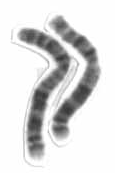
Genotypic and phenotypic features in Turkish patients with classic nonketotic hyperglycinemia.
Sign Up to like & getrecommendations! Published in 2021 at "Metabolic brain disease"
DOI: 10.1007/s11011-021-00718-3
Abstract: Nonketotic hyperglycinemia is an autosomal recessive inborn error of glycine metabolism, characterized by deficient activity of the glycine cleavage enzyme system. Classic nonketotic hyperglycinemia is caused by mutations or genomic changes in genes that encode… read more here.
Keywords: classic nonketotic; turkish patients; hyperglycinemia; gene ... See more keywords

Turkish Insulin Injection Technique Study: Population Characteristics of Turkish Patients with Diabetes Who Inject Insulin and Details of Their Injection Practices as Assessed by Survey Questionnaire
Sign Up to like & getrecommendations! Published in 2018 at "Diabetes Therapy"
DOI: 10.1007/s13300-018-0464-7
Abstract: IntroductionOver 7 million people in Turkey have diabetes. Of the 1 million who inject insulin little is known of their habits and injection techniques.MethodsWe conducted an Injection Technique Questionnaire (ITQ) survey throughout Turkey that involved… read more here.
Keywords: row; insulin; turkish patients; injection technique ... See more keywords

Genetic basis and hematologic manifestations of sitosterolemia in a group of Turkish patients.
Sign Up to like & getrecommendations! Published in 2021 at "Journal of clinical lipidology"
DOI: 10.1016/j.jacl.2021.07.001
Abstract: BACKGROUND Sitosterolemia is a rare lipid disorder caused by mutations in adenosine triphosphate-binding cassette genes (ABCG) 5 and 8. OBJECTIVE To evaluate the phenotypic/genotypic features of sitosterolemia in a group of Turkish patients. METHODS Seven… read more here.
Keywords: hematologic abnormalities; sitosterolemia group; group turkish; turkish patients ... See more keywords

The association between repeat number in C9orf72 and phenotypic variability in Turkish patients with frontotemporal lobar degeneration
Sign Up to like & getrecommendations! Published in 2019 at "Neurobiology of Aging"
DOI: 10.1016/j.neurobiolaging.2018.12.007
Abstract: Frontotemporal lobar degeneration (FTLD) describes a group of progressive brain disorders. The expansion of a noncoding GGGGCC (G4C2) hexanucleotide repeat in the C9orf72 gene is a major cause of both familial FTLD and amyotrophic lateral… read more here.
Keywords: turkish patients; repeat; lobar degeneration; c9orf72 ... See more keywords

Characteristics of uveitic glaucoma in Turkish patients
Sign Up to like & getrecommendations! Published in 2020 at "European Journal of Ophthalmology"
DOI: 10.1177/1120672120950932
Abstract: Purpose: To evaluate the prevalence of uveitic glaucoma (UG) in the Turkish population and investigate the primary underlying diseases. Methods: This multicenter, cross-sectional, prospective study included patients who presented to the glaucoma units of 10… read more here.
Keywords: turkish patients; ophthalmology; glaucoma turkish; uveitic glaucoma ... See more keywords

External validation of the PATHFx decision-support tool on Turkish patients with skeletal metastasis.
Sign Up to like & getrecommendations! Published in 2023 at "Indian journal of cancer"
DOI: 10.4103/ijc.ijc_417_20
Abstract: Objective Accurate determination of life expectancy becomes very important when determining the treatment of patients with pathologic fractures. We aimed to investigate the predictive role of the PATHFx model in Turkish patients by estimating the… read more here.
Keywords: oncology; pathfx; external validation; set cases ... See more keywords

Genotyping of Cutaneous Leishmaniasis Cases Detected Before and After Migration with Real-Time Polymerase Chain Reaction in Hatay
Sign Up to like & getrecommendations! Published in 2020 at "Turkiye parazitolojii dergisi"
DOI: 10.4274/tpd.galenos.2020.6650
Abstract: Objective Leishmania tropica (L. tropica) and Leishmania infantum (L. infantum) are the species causing cutaneous Leishmaniasis (CL) in Turkey. There was a wave of immigration due civil war in Syria in 2011. Migration from Syria,… read more here.
Keywords: turkish patients; tropica; immigration; hatay ... See more keywords